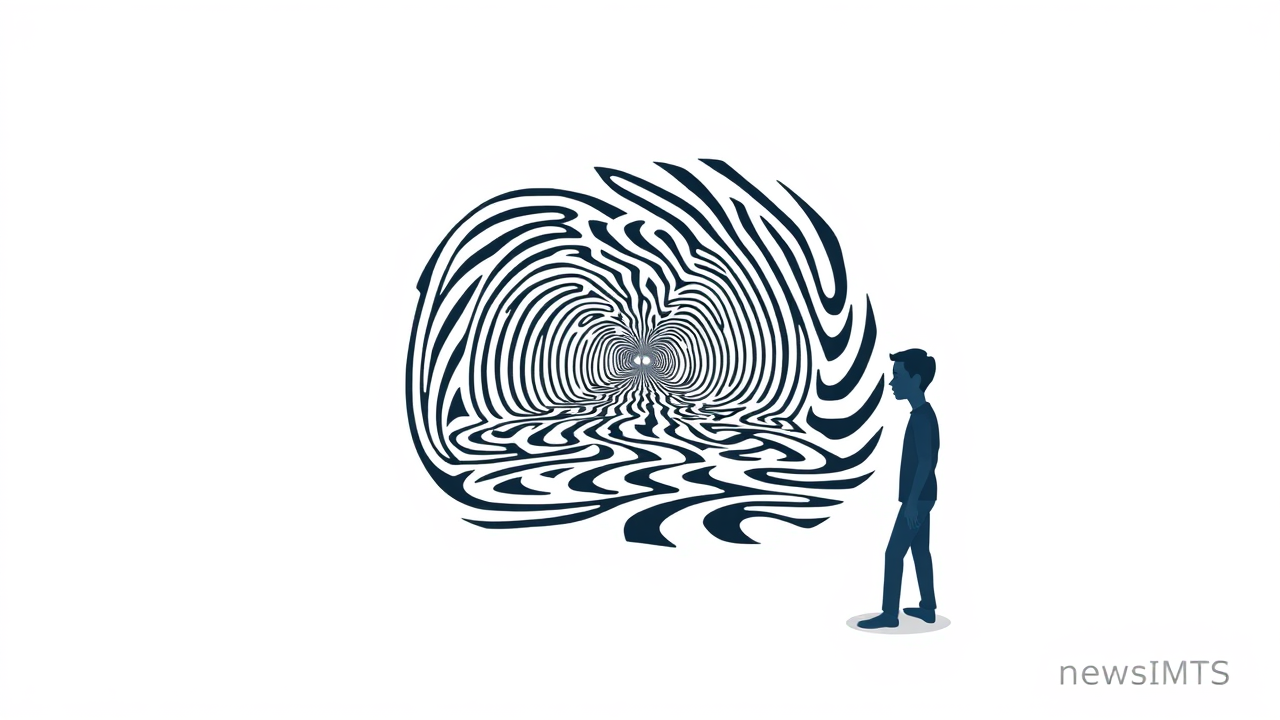 NewsIMTS
NewsIMTSOptical illusions make objects appear different from reality by manipulating spatial relationships, dimensions and visual perception. These creative designs play with colour, shape, patterns and light to deceive the viewer's eye. Artists carefully select and arrange elements to create maximum visual deception through repetition, spatial depth and contrast. Readers can test their visual intelligence by finding the hidden number 484 in a pool of identical figures within 40 seconds. To spot the hidden number, look carefully at the entire image and scan each row and column systematically without rushing. Finding the hidden number indicates strong attention to detail and observational skills. How to approach such visual puzzles: breathe calmly, scan methodically from top to bottom, and focus on what might appear slightly different from surrounding elements. (Updated 9 Nov 2025, 13:03 IST; source: link)
How Optical Illusions Trick Our Brains
Optical illusions are fascinating visual puzzles that make us see things differently from reality. They work by cleverly manipulating shapes, colors, patterns, and light to confuse our visual processing system. Our brain tries to make sense of what we see based on past experiences, but illusions exploit the shortcuts our brain takes when interpreting visual information. Some illusions make static images appear to move, while others can make you see colors that aren't actually there. Artists and scientists design these visual tricks by carefully arranging elements to create maximum deception through contrast, repetition, and spatial relationships. These illusions aren't just entertaining—they help researchers understand how our visual system works.
Testing Your Visual Intelligence Through Illusions
Optical illusions serve as excellent tools to measure visual intelligence—our ability to process and interpret visual information accurately. When you try to spot hidden numbers or figures in a complex image, you're testing your attention to detail and pattern recognition skills. The challenge often involves finding something that looks slightly different among similar objects within a time limit. To succeed at these visual puzzles, it helps to scan the image systematically rather than randomly. Start from one corner and move methodically across the image. People with strong visual intelligence typically notice subtle differences faster. Regular practice with optical illusions can improve your concentration and observational skills, making you more attentive to visual details in everyday life.
Key Points
- These creative designs play with colour, shape, patterns and light to deceive the viewer's eye.
- Readers can test their visual intelligence by finding the hidden number 484 in a pool of identical figures within 40 seconds.
- Optical illusions make objects appear different from reality by manipulating spatial relationships, dimensions and visual perception.
